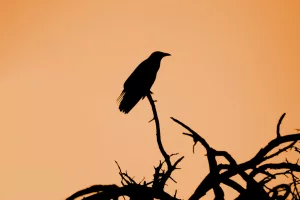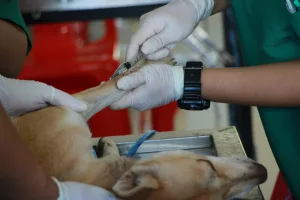As a fish owner, noticing that your fish has clamped fins can be concerning. Clamped fins in fish are a common indicator of underlying health issues that may require your attention. Understanding why your fish is displaying this behavior is crucial for providing the appropriate care and treatment.
What are Clamped Fins?
Clamped fins refer to the fins of a fish that are held closely to its body instead of being spread out naturally. This condition can affect any of the fins, including the dorsal, pectoral, pelvic, or anal fins. Fish with clamped fins may appear lethargic and less active than usual.
Causes of Clamped Fins
There are several reasons why a fish may develop clamped fins. Stress is a common cause, which can be triggered by factors such as poor water quality, overcrowding, sudden changes in temperature, or aggressive tank mates.
Stress-Related Factors
- Water Quality: Fish are sensitive to changes in water chemistry. High levels of ammonia, nitrites, or nitrates can cause stress, leading to clamped fins. Regularly testing the water quality using aquarium test kits is essential. Ensure your water parameters match the specific needs of your fish species. For instance, some tropical fish need a pH level between 6.5 and 7.5, while others may thrive in slightly different conditions.
- Overcrowding: A crowded tank can lead to increased waste and reduced oxygen levels, both of which contribute to stress. Ensure your tank is appropriately sized for the number of fish you have. A common rule of thumb is one inch of fish per gallon of water, but this varies depending on the species and their specific requirements.
- Temperature Fluctuations: Fish are ectothermic animals, meaning they rely on the surrounding temperature for body heat. Sudden changes can shock their systems. Use a reliable aquarium heater and monitor temperatures regularly. For example, tropical fish typically require water temperatures between 75°F and 80°F. Invest in a thermometer to track these conditions precisely.
- Aggressive Tank Mates: Some fish are territorial and may bully others, causing stress and clamped fins. Research compatibility before introducing new fish to your tank. Observe the behavior of your fish regularly to notice any signs of aggression early on.
Health Issues
- Diseases: Fin rot, bacterial infections, or parasites can also lead to clamped fins. Diseases often manifest with other symptoms, such as discoloration or visible lesions. Regularly inspect your fish for any physical changes or unusual behavior that could indicate illness.
- Parasites: Internal and external parasites can stress fish, leading to clamped fins. Look for signs like rubbing against objects or visible spots on the fish. Common parasites include ich, which appears as white spots on the body, or flukes that may require specific treatments.
Symptoms of Clamped Fins
In addition to the fins being clamped close to the body, fish may exhibit other symptoms when experiencing this condition. These may include loss of appetite, changes in behavior, pale gills, or abnormal swimming patterns. It is essential to observe your fish closely to identify any associated symptoms.
Behavioral Changes
- Lethargy: A fish with clamped fins might spend more time at the bottom of the tank or hide among decorations. This could also be a sign of poor water quality or illness, so it’s important to check all possible causes.
- Decreased Appetite: If your fish is not interested in food, it could be a sign of underlying stress or illness. Try offering different types of food to see if they respond, but be cautious not to overfeed.
- Erratic Swimming: Notice if your fish is swimming irregularly or appears uncoordinated. This can indicate stress or illness, particularly if it accompanies other symptoms.
Treatments for Clamped Fins
Addressing the underlying cause of clamped fins is crucial for restoring your fish’s health. Start by testing the water parameters to ensure they are within the optimal range. Perform regular water changes and maintain a clean environment for your fish.
Water Quality Improvements
- Regular Water Changes: Change 10-15% of the water weekly to keep toxin levels low and oxygen levels high. This also helps remove waste that can build up and cause stress.
- Use Water Conditioners: These can neutralize chlorine and chloramines, making tap water safe for fish. Be mindful of the specific needs of your fish. Some may be sensitive to certain conditioners.
- Establish a Nitrogen Cycle: Ensure your tank is cycled properly to avoid spikes in ammonia or nitrites. Cycling involves establishing beneficial bacteria that convert harmful compounds into less toxic forms.
- Filtration System: Use an appropriate filter for your tank size. Filters help maintain water quality by removing debris and toxins. Consider filters that offer biological, chemical, and mechanical filtration for a comprehensive solution.
Addressing Disease and Parasites
- Quarantine New Fish: Isolate new fish for a couple of weeks before introducing them to the main tank to prevent disease spread. This practice helps prevent introducing new pathogens to your established community.
- Medication: If a specific disease is diagnosed, use appropriate medications. Follow the instructions carefully to avoid harming the fish. Consult with a vet or a knowledgeable aquarium professional for advice on the best treatments.
- Consult a Veterinarian: If the issue persists, consider consulting a veterinarian who specializes in fish health for a proper diagnosis and treatment plan. They can offer insights into less common diseases and appropriate care strategies.
Preventative Measures
Preventing clamped fins is often easier than treating them. By maintaining a stable and clean environment, many of the stressors that lead to clamped fins can be avoided.
Tank Maintenance
- Routine Cleaning: Regularly clean the tank by vacuuming the substrate and removing uneaten food and waste. This prevents the buildup of harmful toxins that can stress fish.
- Stable Environment: Keep the tank in a location where temperature and light levels are consistent. Avoid placing the tank in direct sunlight or near heating vents, which can cause temperature fluctuations.
- Choosing the Right Fish: Research the specific needs of the fish species you keep. Some fish require specific water conditions or tank setups. For example, some species are more suited for community tanks, while others prefer solitude.
Case Studies and Examples
Let’s look at a few real-world scenarios to further understand how to manage clamped fins.
Example 1: Overcrowded Tank
A hobbyist with a 20-gallon tank noticed clamped fins in their community of tetras. Upon investigation, it was found that the tank was overcrowded due to recent additions. The owner decided to upgrade to a 40-gallon tank, reducing stress and allowing the fish more room to thrive. Within weeks, the fish displayed more natural behaviors and their fins unclamped. The owner also took the opportunity to separate incompatible species, further reducing stress.
Example 2: Sudden Temperature Drop
In another instance, a goldfish owner experienced a heater malfunction that led to a rapid temperature drop overnight. The goldfish exhibited clamped fins and lethargy. After quickly stabilizing the temperature and adding an extra heater for redundancy, the fish recovered, and the fins returned to their normal state. This case highlights the importance of regular equipment checks and having backup systems in place.
Common Mistakes and How to Avoid Them
- Ignoring Water Parameters: Many new fish owners neglect regular water testing. Invest in a good test kit and make it a routine part of your maintenance. This can prevent many common issues before they escalate.
- Impulse Buying: Adding new fish without researching compatibility can lead to aggression and stress. Always plan your tank’s inhabitants carefully, considering their specific needs and behaviors.
- Overfeeding: Excess food leads to poor water quality. Feed only what your fish can consume in a few minutes, and remove uneaten food promptly. This simple practice can significantly reduce the risk of stress-related issues.
Step-by-Step Guidance on Setting Up a Healthy Tank
- Research: Before buying your fish, research their specific needs, including tank size, water conditions, and compatible species. Understanding these requirements will guide your setup and maintenance practices.
- Cycling the Tank: Set up the tank and allow it to cycle for several weeks before adding fish. This process establishes beneficial bacteria that help manage waste. Use a test kit to monitor the cycling process and wait until ammonia and nitrite levels are zero.
- Introduce Fish Gradually: Add fish slowly to avoid overwhelming the biological filtration system and causing spikes in ammonia or nitrites. Start with a few hardy species that can tolerate initial fluctuations.
- Monitor and Adjust: Regularly check water parameters and adjust as necessary. Be proactive in addressing any changes in fish behavior or appearance. Early intervention can prevent minor issues from becoming major problems.
- Maintain Equipment: Regularly inspect and maintain your aquarium equipment, including filters, heaters, and lighting. Ensuring these systems function correctly is crucial for a stable environment.
Advanced Tips for Experienced Fish Keepers
- Biotope Aquariums: For those looking to create a more natural environment, consider setting up a biotope aquarium that mimics the natural habitat of your fish. This can reduce stress and promote natural behaviors.
- Use of Live Plants: Incorporating live plants can improve water quality and provide hiding spots, reducing stress for shy species. Plants also contribute to the nitrogen cycle and offer aesthetic benefits.
- Behavioral Observation: Spend time observing your fish daily. This not only helps in identifying issues early but also allows for a deeper understanding of their behaviors and needs.
- Community vs. Species-Only Tanks: Consider whether a community tank or a species-only tank is more appropriate for your situation. This decision impacts the social dynamics and stress levels of your fish.
Overall, clamped fins in fish should not be ignored, as they often indicate an underlying health issue that requires attention. By understanding the causes, symptoms, and treatments for this condition, you can help ensure the well-being of your aquatic pets. Regular maintenance, observation, and a willingness to learn about your fish’s needs are key to preventing issues and maintaining a thriving aquarium.



